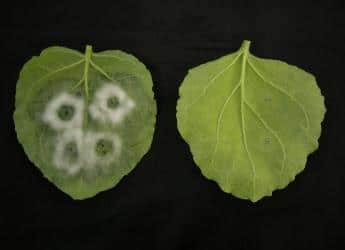An online, user-friendly plant health information resource will be launched at Scotland’s first-ever Plant Health Conference, which is set to gather representatives from industry, public bodies, government and scientists, all around the common theme of how best to preserve Scotland’s plant-based industries.
The online tool, developed by Royal Botanic Garden Edinburgh, allows users to access high-quality information about the biggest threats to plants in Scotland’s natural environment, and what to do when these threats are found. It fills a unique niche in the online landscape: while there are many resources for plant health in forestry, agriculture, and gardens, there are few resources relevant to the natural environment.
Professor Ian Toth, director of the Plant Health Centre, said: “Plants play essential roles in our lives from recreation and tourism to the economics of timber and crop production. However, the potential for harm from pests and diseases is ever-present.
“Besides the many pests and pathogens that currently infect our plants, there are over 1000 others that could pose a threat to the UK’s arable crops, trees, horticulture and wild plants. This makes it vital to adopt a co-ordinated approach across sectors to monitoring plant diseases, as well as helping stakeholders understand how to improve their plant health capabilities.”
Now in its second year of operation, Scotland’s Plant Health Centre is a joint endeavour of ten leading research organisations: James Hutton Institute, Forest Research, Royal Botanic Garden Edinburgh, Scotland’s Rural College (SRUC), the universities of Strathclyde, Exeter and Edinburgh, Centre for Ecology & Hydrology, Science and Advice for Scottish Agriculture, and Biomathematics and Statistics Scotland.
The conference programme includes presentations on climate change, Brexit and emerging new threats including Xylella fastidiosa, which has been described by the European Commission as one of the most dangerous plant bacteria worldwide, causing a variety of diseases with substantial economic impact for agriculture, public gardens and the environment.
For more information on Scotland’s Plant Health Centre, visit www.planthealthcentre.scot.
Source: The James Hutton Institute













